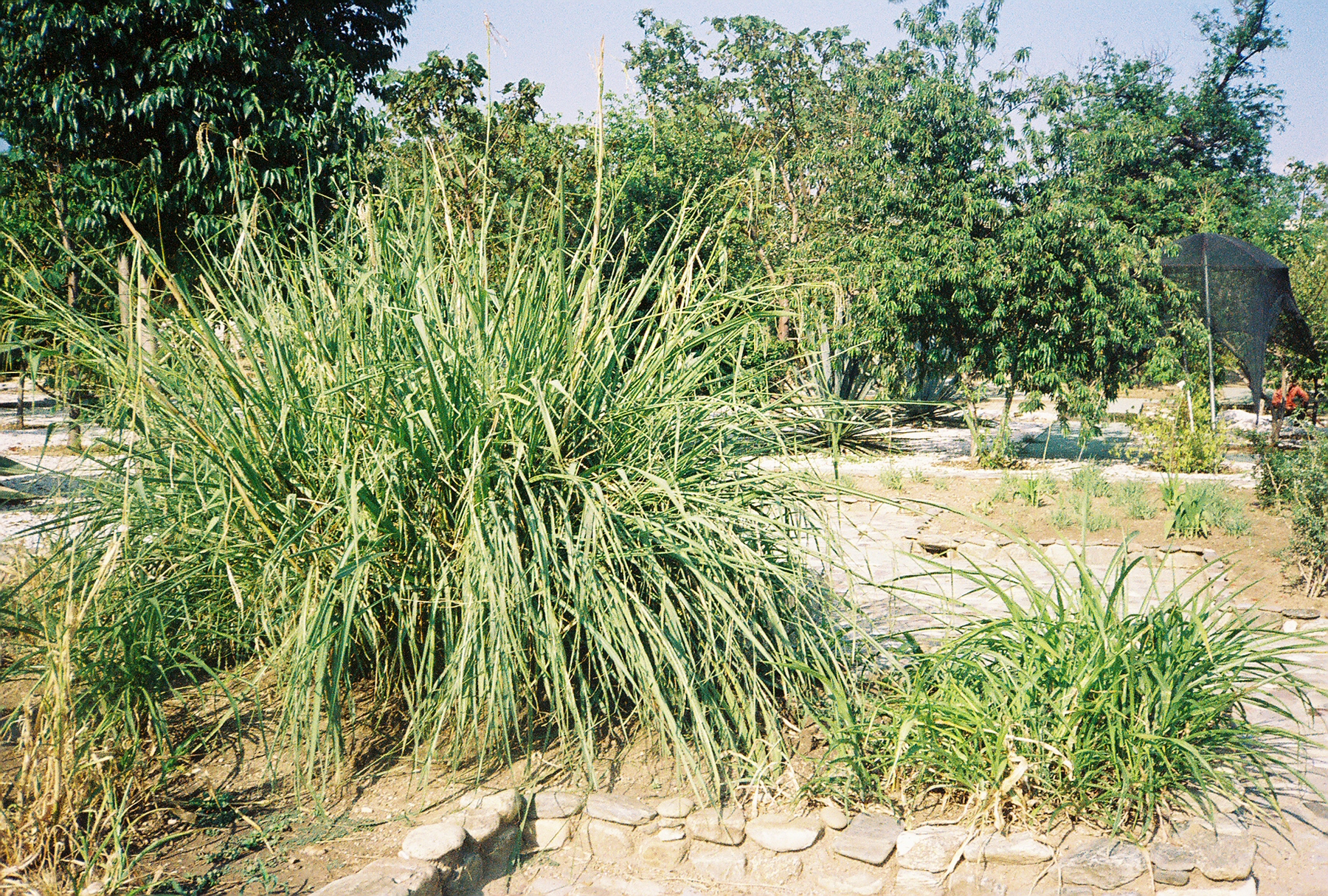- Teosinte
image_caption = Two teosintes
regnum =Plant ae
divisio = Magnoliophyta
classis =Liliopsida
ordo =Poales
familia =Poaceae
genus = "Zea"
genus_authority = L.
subdivision_ranks = species
subdivision = "Z. diploperennis"
"Z. luxurians"
"Z. mays" ssp. "huehuetenangensis"
"Z. mays" ssp. "mays" (maize )
"Z. mays" ssp. "mexicana"
"Z. mays" ssp. "parviglumis"
"Z. nicaraguensis"
"Z. perennis"The teosintes are a group of large grasses of the genus "Zea" found in
Mexico ,Guatemala andNicaragua .There are five recognized species of teosinte: "Zea diploperennis", "Zea perennis", "Zea luxurians", "Zea nicaraguensis" and "Zea mays". The last species is further divided into four subspecies: ssp. "huehuetenangensis", ssp. "mexicana", ssp. "parviglumis" and ssp. "mays". The first three subspecies are teosintes; the last is
maize , or corn, the only domesticatedtaxon in the genus "Zea". The species are grouped into two sections, sect. "Luxuriantes", with the first four species, and sect. "Zea" with "Zea mays". The former section is typified by dark-staining knobs made up ofheterochromatin that are terminal on mostchromosome arms, while most subspecies of sect. "Zea" may have 0 to 3 knobs between each chromosome end and thecentromere and very few terminal knobs (except ssp. "huehuetenangensis" which has many large terminal knobs). The two perennials are thought to be one species by some.The term "teosinte" accompanied the first Guatemalan accession and seems not to have been used in Mexico. Curiously some members of the related genus "Tripsacum" may be locally referred to as "teosinte" as may a
cycad .There are both annual and perennial teosinte species. "Zea diploperennis" and "Z. perennis" are perennial, while all other
taxa are annual. All species arediploid (n=10) with the exception of "Z. perennis", which istetraploid (n=20). The different species and subspecies of teosinte can be readily distinguished based on morphological, cytogenetic, protein and DNA differences and on geographic origin, although the two perennials are sympatric and very similar. The most puzzling teosinte is "Z. mays" ssp. "huehuetenangensis" which combines a morphology rather like "Z. m." ssp. "parviglumis" with many terminal chromosome knobs and an isozyme position between the two sections. Phenotypically the most distinctive and the most threatened teosinte is "Z. nicaraguensis" which thrives in flooded conditions along 200 meters of a coastal estuarine river in northwest Nicaragua.As would be expected, teosinte strongly resembles maize in many ways, notably their tassel (male inflorescence) morphology. Teosintes are distinguished from maize most obviously by their numerous branches each bearing bunches of distinctive, small female
inflorescences . These spikes mature to form a two-ranked 'ear' of five to ten triangular or trapezoidal, black or brown disarticulating segments, each with one seed. Each seed is enclosed by a very hard fruitcase, consisting of a cupule or depression in the rachis and a tough lower glume. This protects them from the digestive processes ofruminants that forage on teosinte and aid in seed distribution through their droppings. Teosinte seed exhibits some resistance to germination but will quicklygerminate if treated with a dilute solution of hydrogen peroxide.All but the Nicaraguan species of teosinte may grow in or very near corn fields, providing opportunities for introgression between teosinte and maize. First- and later-generation hybrids are often found in the fields, but the rate of gene exchange is quite low. Some populations of "Zea mays" ssp. "mexicana" display
Vavilovian mimicry within cultivated maize fields, having evolved a maize-like form as a result of the farmers' selective weeding pressure. In some areas ofMexico , teosintes are regarded by maize farmers as a noxious weed, while in a few areas farmers regard it as a beneficial companion plant, and encourage its introgression into their maize.Virtually all populations of teosinte are either threatened or endangered: "Zea diploperennis" exists in an area of only a few square miles; "Zea nicaraguensis" survives as approx. 6000 plants in an area 200 x 150 meters. The Mexican and Nicaraguan governments have taken action in recent years to protect wild teosinte populations, using both "in-situ" and "ex-situ" conservation methods. There is currently a large amount of scientific interest in conferring beneficial teosinte traits, such as insect resistance, perennialism and flood tolerance, to cultivated maize lines, although this is very difficult due to linked deleterious teosinte traits.
Teosintes are critical components of maize evolution, but opinions vary about which taxa were involved. According to one evolutionary model, the crop was derived directly from "Zea mays" ssp. "parviglumis" by selection of key mutations; up to 12% of its genetic material came from "Zea mays" ssp. "mexicana" through
introgression . Another model proposes that a tiny-eared wild maize was domesticated, and after being spread from east-central Mexico, this cultigen hybridized with "Z. luxurians" or "Z. diploperennis" resulting in a great explosion of maize genetic diversity, ear and kernel forms, and capacity to adapt to new habitats, as well as increased yields. A third model suggests that the early maize resulted from a cross between "Z. diploperennis" and a species of "Tripsacum"; support for this is minimal."Zea" species are used as food plants by the
larva e (caterpillar s) of someLepidoptera species including (in the Americas) thefall armyworm , "Spodoptera frugiperda"; thecorn earworm , "Helicoverpa zea"; thestem borer s "Diatraea" and "Chilo"; in the Old World, it is attacked by theDouble-striped Pug , thecutworm sHeart and Club ,Heart and Dart , "Hypercompe indecisa",Rustic Shoulder-knot ,Setaceous Hebrew Character andTurnip Moth , and theEuropean Corn Borer ("Ostrinia nubilalis"), among many others.External links
* [http://www.plantnames.unimelb.edu.au/Sorting/Zea.html "Zea" species and typical cultivars] This list is of historical interest to taxonomists. It is largely of no practical use because many or most are based on single-gene mutations and if completed would be thousands of entries long. Modern classifications are available that are of great utility.
Wikimedia Foundation. 2010.

